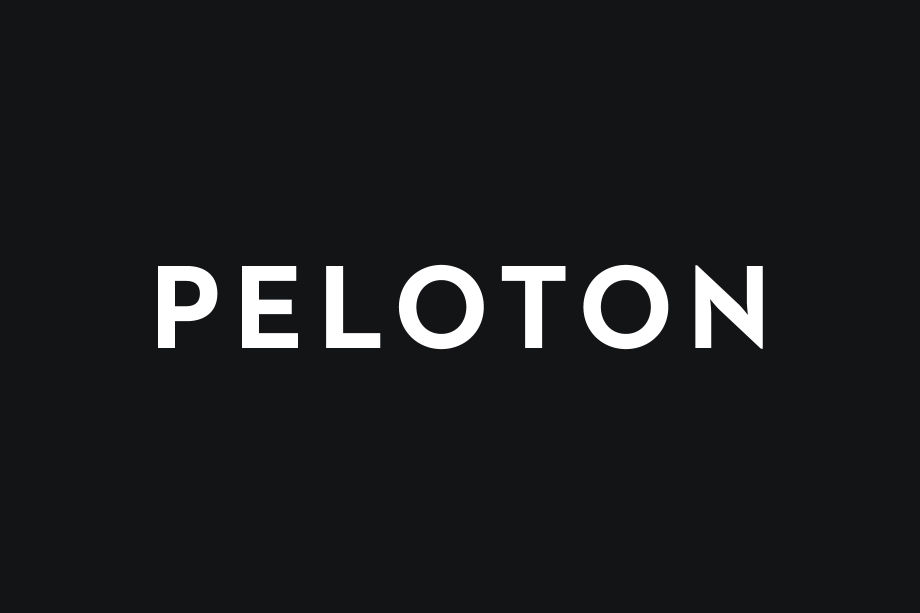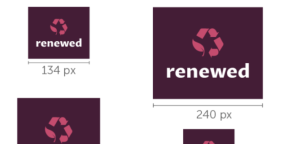If you’re a fan of fitness, you’ve likely heard of Peloton. Peloton is a popular fitness brand that offers a variety of cycling and fitness products. One of the most recognizable aspects of the brand is its logo, which is a combination of a letter “P” and an abstract pedal. The logo is simple, yet visually pleasing, and it quickly conveys the brand’s aim of providing cycling and fitness products to customers.
The Peloton logo has been around since 2012 and has remained relatively unchanged since then. The designer of the logo fused the letter “P” and an abstract pedal to create a unique symbol that represents the brand. The logo is often used in conjunction with the brand’s name, which is written in a modern, sans-serif font. The combination of the two elements creates a cohesive and recognizable brand identity.
Overall, the Peloton logo is a great example of effective branding. It is simple, yet memorable, and it effectively communicates the brand’s mission. Whether you’re a Peloton enthusiast or simply appreciate good design, the Peloton logo is definitely worth taking a closer look at.
The Birth of Peloton Logo
Peloton, the interactive-at-home fitness brand, was founded by John Foley in January 2012. The idea originated when Foley and his wife, Jill, were unable to keep up with their fitness routine after the birth of their second child. They were not able to afford gym memberships or personal trainers, so they decided to create an affordable and effective way to exercise at home.
Foley shared his vision with his friends, Tom, Graham, Hisao, and Yony, who eventually became co-founders of Peloton. They started by creating a high-tech exercise bike that allowed users to stream live and on-demand classes from the comfort of their own homes.
The Peloton logo was created to represent the brand’s values and mission. According to Forbes, the logo fuses a “p” with a wheel, representing the company’s focus on cycling. The logo has a sleek and modern design, with a monochrome color scheme that gives it a timeless appeal.
Overall, the Peloton logo is a perfect representation of the brand’s mission to provide an affordable and effective way to exercise at home. It is a symbol of innovation, technology, and fitness, and it has become an iconic symbol of the Peloton brand.
Evolution of the Peloton Logo
Peloton has undergone several changes in its logo design since its inception. The brand’s logo has evolved over time, reflecting the company’s growth and brand identity. In this section, we will take a look at the evolution of the Peloton logo.
Initial Years
In its early years, the Peloton logo featured a bold, lowercase “peloton” in a sleek, sans-serif font. This design captured the essence of the brand’s modernity and forward-thinking nature. The logo was simple, yet effective, and conveyed the brand’s aim of providing cycling and fitness products to customers.
Modern Adaptations
Over time, the Peloton logo has undergone several modern adaptations. The current logo comprises two parts – a graphic and text. The designer fused the letter “P” and an abstract pedal in crafting the symbol. This icon quickly conveys the brand’s aim of providing cycling and fitness products to customers. Often, the petal-like symbol walks with a wordmark.
The Peloton logo is composed of a clean font and an icon on the right. The icon resembles the letter “P” in monochrome and slanted disposition. It’s this “P” icon that’s placed on the circular bicycle “pedal.” The logo meets one of the fundamental qualities of a logo – it’s minimalistic.
In conclusion, the evolution of the Peloton logo has been a journey of innovation and creativity. The brand’s logo has evolved over time, reflecting the company’s growth and brand identity. Peloton’s modern logo is a testament to the brand’s commitment to providing high-quality cycling and fitness products to its customers.
Symbolism in the Peloton Logo
The Peloton logo is a simple yet powerful design that conveys the brand’s mission of providing cycling and fitness products to customers. The logo comprises two parts – a graphic and text. The graphic is an abstract pedal that resembles the letter “P,” and it is often placed beside the wordmark.
The pedal-like symbol in the Peloton logo represents the brand’s focus on cycling and fitness. It is a simple yet effective way to communicate the essence of the brand. The circular shape of the emblem symbolizes unity, community, and continuity. The brand name in uppercase letters within the circular emblem also represents the strength and power of the brand.
The monochrome color palette of the Peloton logo exudes power and style. The black and white color combination is simple yet elegant, and it reflects the brand’s focus on simplicity and functionality. The font used in the logo is modern and sans-serif, which adds to the brand’s contemporary and innovative image.
In summary, the Peloton logo is a well-designed emblem that symbolizes the brand’s mission, values, and identity. The abstract pedal-like symbol and circular emblem represent the brand’s focus on cycling, fitness, and community. The monochrome color palette and modern font add to the brand’s contemporary and innovative image.
Impact of the Peloton Logo
The Peloton logo has had a significant impact on the brand’s identity and consumer perception. Let’s take a closer look at how the logo has influenced these areas.
Influence on Brand Identity
The Peloton logo has played a crucial role in shaping the brand’s identity. The logo’s minimalist design and sleek typography reflect the company’s commitment to providing high-quality, modern fitness products. The circular emblem with the letter “P” inside represents the brand’s focus on cycling and fitness, as well as its innovative approach to technology.
The logo has also helped to establish Peloton as a premium brand. Its clean and sophisticated design conveys a sense of exclusivity and luxury, which has helped the company attract a loyal following of fitness enthusiasts and high-end consumers.
Consumer Perception
The Peloton logo has had a significant impact on consumer perception. The logo’s sleek and modern design has helped to position the brand as a leader in the fitness industry. Consumers associate the logo with high-quality products, cutting-edge technology, and a premium experience.
The logo has also helped to create a sense of community among Peloton users. The circular emblem with the letter “P” inside has become a symbol of the brand’s shared values and mission. It represents a commitment to health, fitness, and personal growth, which has helped to attract a passionate and engaged community of users.
Overall, the Peloton logo has had a profound impact on the brand’s identity and consumer perception. Its minimalist design, sleek typography, and circular emblem have helped to establish Peloton as a premium brand and create a sense of community among its users.
Peloton Logo Across Different Platforms
As a Peloton enthusiast, you may have noticed that the Peloton logo looks slightly different depending on the platform you are using. Here’s how the logo appears across different platforms:
Peloton App
The Peloton logo on the app is a simple black and white design with the word “Peloton” written in a bold, sans-serif font. The logo is placed on a white background, making it easy to spot and recognize.
Peloton Bike
On the Peloton Bike, the logo is located on the front of the screen and is also black and white. However, the logo is slightly different from the app logo. The “P” in “Peloton” is stylized to look like a bicycle pedal, which is a clever nod to the company’s focus on cycling.
Peloton Tread
Like the Peloton Bike, the Peloton Tread also features the Peloton logo on the front of the screen. However, the logo is slightly larger and more prominent on the Tread. The “P” in “Peloton” is also stylized to look like a treadmill belt, which is a nice touch.
Peloton Website
The Peloton website features a slightly different version of the logo. The word “Peloton” is still written in a bold, sans-serif font, but the “P” is not stylized like it is on the bike and tread. Instead, it is simply a capital letter “P” with a small dot inside the loop.
Overall, the Peloton logo is a simple yet effective design that looks great across all platforms. Whether you’re using the app, bike, tread, or website, you’ll always be able to spot the Peloton logo and feel excited to start your workout.
Comparative Analysis with Competitors’ Logos
When it comes to branding, a logo is a crucial element that can make or break a company’s image. Peloton’s logo is a simple and modern design that reflects the company’s focus on fitness and technology. However, it’s essential to compare Peloton’s logo with its competitors to see how it stacks up in the market.
Bowflex
Bowflex is one of Peloton’s main competitors, and its logo is a bold and straightforward design. The logo features the company’s name in capital letters with a red and black color scheme. The Bowflex logo is easy to read and memorable, but it lacks the modern and sleek design of Peloton’s logo.
NordicTrack
NordicTrack is another company that competes with Peloton, and its logo is a blue and white design that features the company’s name in lowercase letters. The NordicTrack logo is simple and clean, but it doesn’t have the same impact as Peloton’s logo. Peloton’s logo is more recognizable and memorable, which gives it an advantage in the market.
Echelon
Echelon is a newer company that offers similar products to Peloton, and its logo is a blue and white design that features the company’s name in lowercase letters. The Echelon logo is similar to NordicTrack’s logo, but it lacks the modern and sleek design of Peloton’s logo. Peloton’s logo stands out in the market and helps the company to differentiate itself from its competitors.
In conclusion, Peloton’s logo is a strong and recognizable design that helps the company to stand out in the market. While its competitors’ logos are simple and clean, Peloton’s logo has a modern and sleek design that reflects the company’s focus on fitness and technology.
Future Predictions for the Peloton Logo
As Peloton continues to evolve and grow, it’s likely that their logo will continue to change as well. Here are some potential future predictions for the Peloton logo:
- Simplification: The current Peloton logo is already quite simple, but there’s always room for further simplification. It’s possible that Peloton will streamline their logo even more, perhaps removing the circular emblem and sticking with just the brand name in a bold font.
- Personalization: Peloton is all about personalization and customization, so it’s possible that they may introduce different versions of their logo to appeal to different segments of their audience. For example, they could create a more playful or colorful logo for their Peloton Kids line.
- Incorporation of New Technology: Peloton is constantly innovating and introducing new technology to their products. It’s possible that their logo could reflect this by incorporating elements of virtual reality or other cutting-edge technologies.
- Internationalization: As Peloton expands into new markets around the world, they may need to adapt their logo to better resonate with local audiences. This could involve incorporating new colors or symbols that are more meaningful in different cultures.
Overall, the future of the Peloton logo is exciting and full of possibilities. Whatever changes may come, Peloton will undoubtedly continue to prioritize their branding and design to maintain their status as a leader in the fitness industry.
Barry Edwards is a digital marketing expert with a deep understanding of content strategy, logo, and branding principles. Holding a Bachelor’s degree in Marketing from Beaconhill College, he offers valuable insights on digital marketing trends and strategies through his writing. Follow Barry’s work to stay updated on the latest in online marketing and branding.



